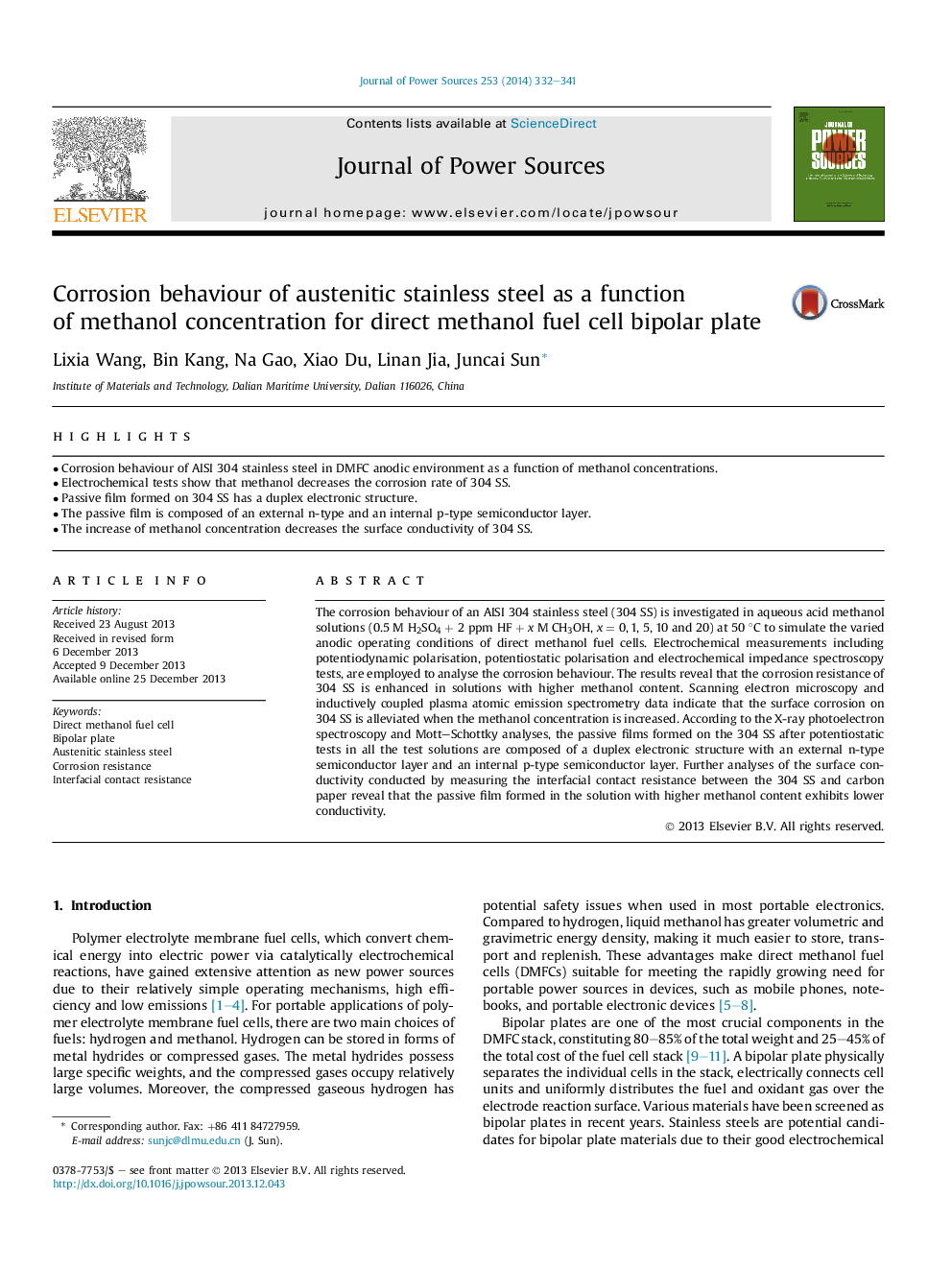| کد مقاله | کد نشریه | سال انتشار | مقاله انگلیسی | نسخه تمام متن |
|---|---|---|---|---|
| 1287081 | 1497979 | 2014 | 10 صفحه PDF | دانلود رایگان |
• Corrosion behaviour of AISI 304 stainless steel in DMFC anodic environment as a function of methanol concentrations.
• Electrochemical tests show that methanol decreases the corrosion rate of 304 SS.
• Passive film formed on 304 SS has a duplex electronic structure.
• The passive film is composed of an external n-type and an internal p-type semiconductor layer.
• The increase of methanol concentration decreases the surface conductivity of 304 SS.
The corrosion behaviour of an AISI 304 stainless steel (304 SS) is investigated in aqueous acid methanol solutions (0.5 M H2SO4 + 2 ppm HF + x M CH3OH, x = 0, 1, 5, 10 and 20) at 50 °C to simulate the varied anodic operating conditions of direct methanol fuel cells. Electrochemical measurements including potentiodynamic polarisation, potentiostatic polarisation and electrochemical impedance spectroscopy tests, are employed to analyse the corrosion behaviour. The results reveal that the corrosion resistance of 304 SS is enhanced in solutions with higher methanol content. Scanning electron microscopy and inductively coupled plasma atomic emission spectrometry data indicate that the surface corrosion on 304 SS is alleviated when the methanol concentration is increased. According to the X-ray photoelectron spectroscopy and Mott–Schottky analyses, the passive films formed on the 304 SS after potentiostatic tests in all the test solutions are composed of a duplex electronic structure with an external n-type semiconductor layer and an internal p-type semiconductor layer. Further analyses of the surface conductivity conducted by measuring the interfacial contact resistance between the 304 SS and carbon paper reveal that the passive film formed in the solution with higher methanol content exhibits lower conductivity.
Journal: Journal of Power Sources - Volume 253, 1 May 2014, Pages 332–341
